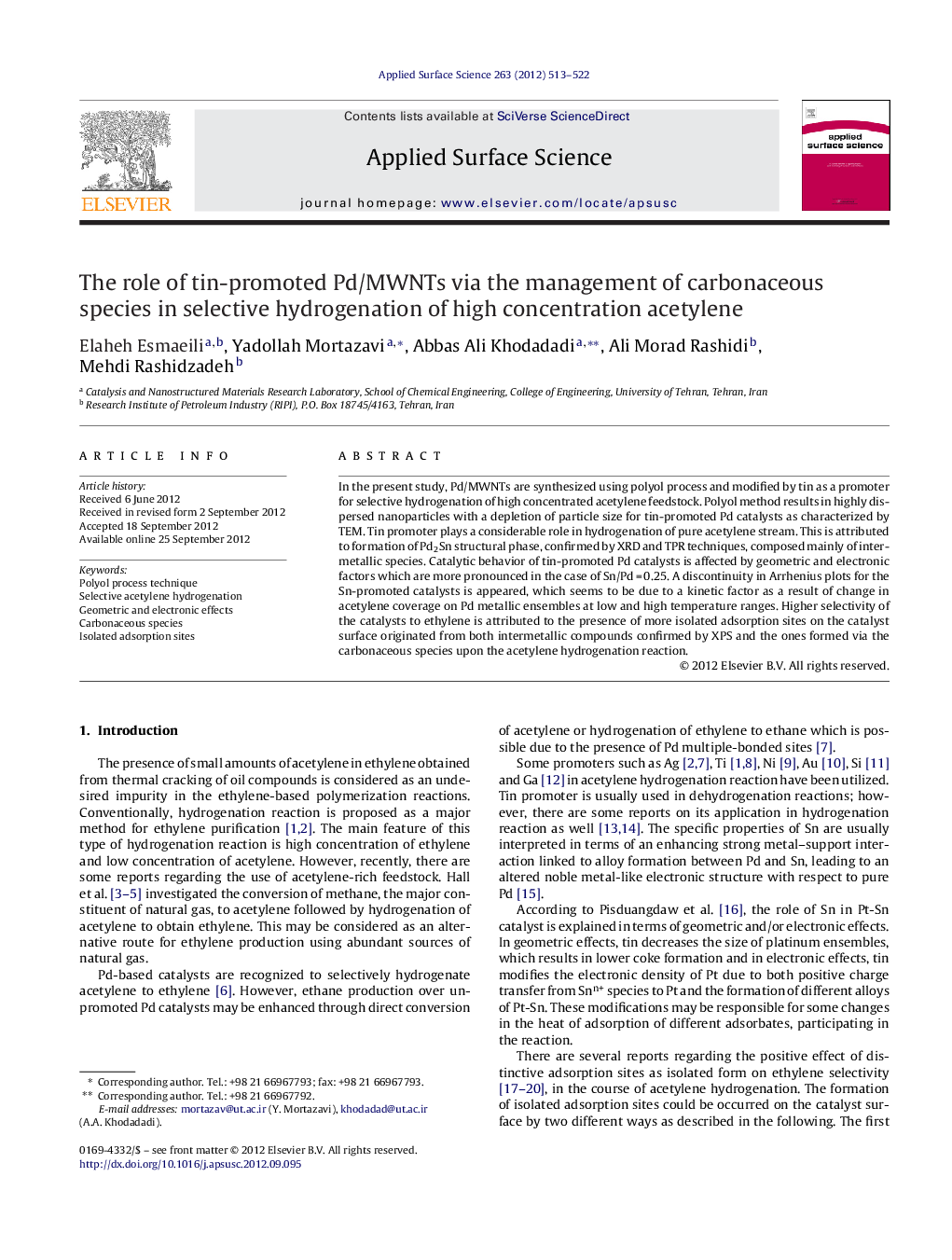| Article ID | Journal | Published Year | Pages | File Type |
|---|---|---|---|---|
| 5364210 | Applied Surface Science | 2012 | 10 Pages |
In the present study, Pd/MWNTs are synthesized using polyol process and modified by tin as a promoter for selective hydrogenation of high concentrated acetylene feedstock. Polyol method results in highly dispersed nanoparticles with a depletion of particle size for tin-promoted Pd catalysts as characterized by TEM. Tin promoter plays a considerable role in hydrogenation of pure acetylene stream. This is attributed to formation of Pd2Sn structural phase, confirmed by XRD and TPR techniques, composed mainly of intermetallic species. Catalytic behavior of tin-promoted Pd catalysts is affected by geometric and electronic factors which are more pronounced in the case of Sn/Pd = 0.25. A discontinuity in Arrhenius plots for the Sn-promoted catalysts is appeared, which seems to be due to a kinetic factor as a result of change in acetylene coverage on Pd metallic ensembles at low and high temperature ranges. Higher selectivity of the catalysts to ethylene is attributed to the presence of more isolated adsorption sites on the catalyst surface originated from both intermetallic compounds confirmed by XPS and the ones formed via the carbonaceous species upon the acetylene hydrogenation reaction.
⺠Synthesis of highly active tin-promoted catalysts by polyol method for selective hydrogenation of high concentration of acetylene. ⺠A positive change in the catalytic activities of tin-promoted catalysts results from distinct geometric and electronic effects. ⺠Change in the coverage of acetylenic overlayers for different temperature regions corresponds to the change of the number of isolated adsorption sites. ⺠The isolated adsorption sites are responsible for the enhancement of selectivity to ethylene with increased temperatures, via the management of the carbonaceous species over the catalyst surface.
